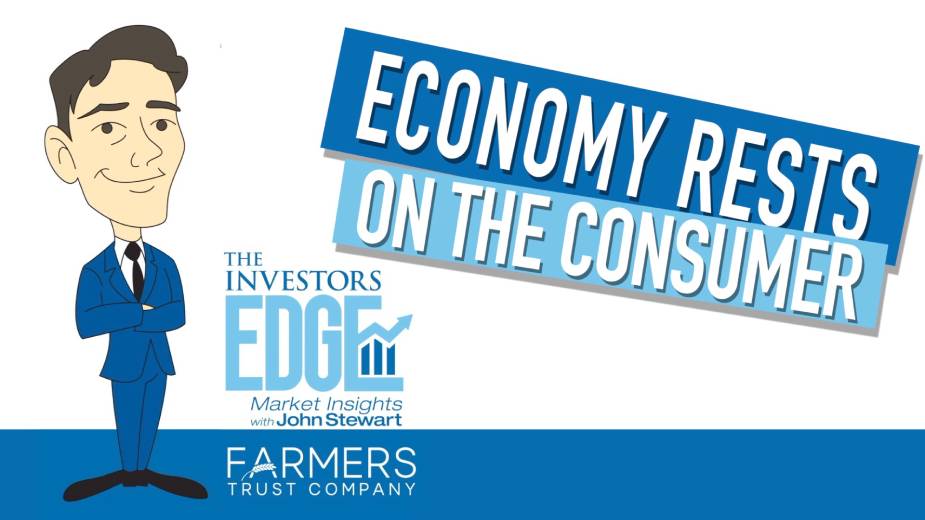Bond Market Bloodbath | Investors Edge
By John Stewart, chief investment officer at Farmers Trust Co.
Week in Review: Bond Market Bloodbath
CANFIELD, Ohio — Most people give all their attention to how the stock market is doing with little concern for the bond market. That’s partly due to the stock market being far more exciting (to most people), and the fact that most people consider their bond investments to be relatively safe and stable.
Most investors have far more exposure to the bond market than they probably realize, and that’s not necessarily a bad thing. Most of the time, high quality bond investments are very stable and secure.
When interest rates rise rapidly, however, as they have in the past few months, bond prices take a hit. Longer-term Treasury bond prices have fallen 4% in value in just the past week alone.
For the Aggregate U.S. bond market, the first quarter was the worst return (-6%) for any calendar quarter since 1980. Side note – that’s the year I was born – so I guess you can figure out how old I am now.
If you have significant investments in bonds or bond mutual funds, they have failed to provide protection from the recent weakness in the stock market, which they are historically known to do a rather good job of. Fear not; unlike the stock market, bonds have specific terms of interest and principal payments, and over time higher interest rates will help bond investors earn more income. This should be a classic case of taking one step back in order to take two steps forward.
Featured Insight: Be Aware of Where Companies Generate Revenue
Given the recent geopolitical turmoil, investors have been made aware of the importance of knowing where the companies they own generate their revenue, and the risk associated with those parts of the world.
Companies you own may be domiciled in the United States, but generate a substantial portion of the income overseas.
For example, McDonald’s gets about 5% of its sales from Russia, which is a big part of the reason the stock plummeted nearly 20% between January and March. The reaction was obviously overdone, and the shares have recovered about 2/3 of that loss, but you get the point.
Many U.S. companies have significant exposure to China, which is in the midst of a dramatic economic slowdown in part due to renewed COVID pressures. The same is true of Europe, which is reeling from a combination of skyrocketing energy costs and war-related pressures.
Just be careful to do your homework; your U.S. stock portfolio could be far more global than you realize.
Looking Ahead: Another Earnings Season Gets Underway
With the first quarter in the rear-view, we will begin to get corporate earnings reports in the coming weeks detailing what happened in the first three months of the year, as well as some insight into what companies expect business conditions to look like as we move through the balance of the year.
If you watch The Investors Edge regularly, you should know that future expectations are far more important than anything that already happened in the past.
Earnings estimates for the next two quarters started falling late last year, but they have been holding up in recent weeks as analysts await more information from corporate managements.
Slowing economic growth and input cost pressures are likely to create some caution on the part of business leaders regarding future sales and earnings forecasts.
If this precipitates another leg down in earnings estimates, we may see more near-term pressure on the stock market in the coming weeks. Helping to offset that risk a bit is the fact that investor expectations are already quite low given the pervasive bearishness that already exists across the investment landscape.
Copyright 2024 The Business Journal, Youngstown, Ohio.


